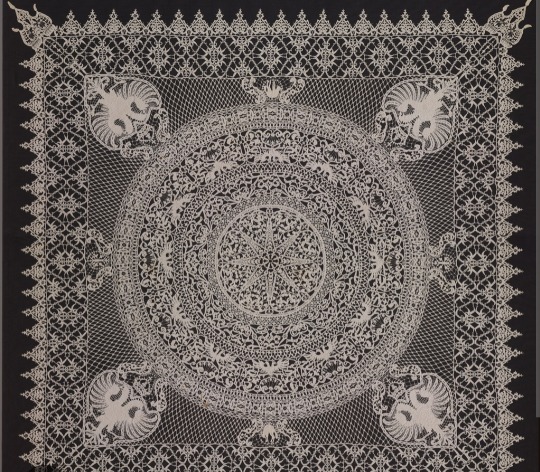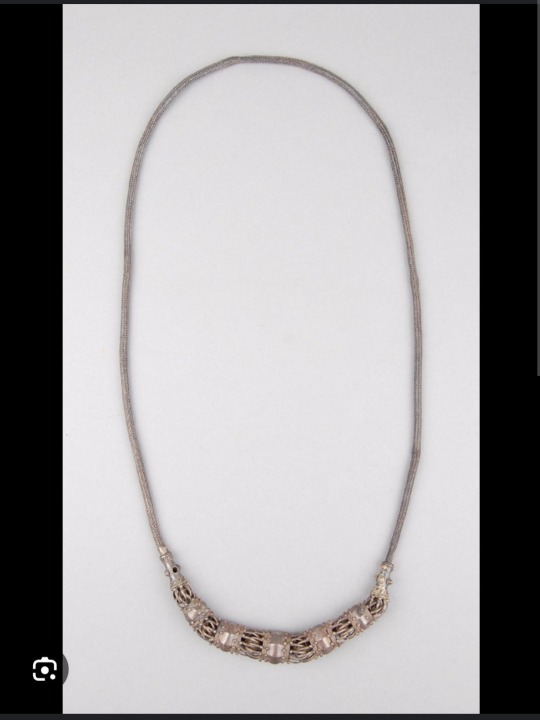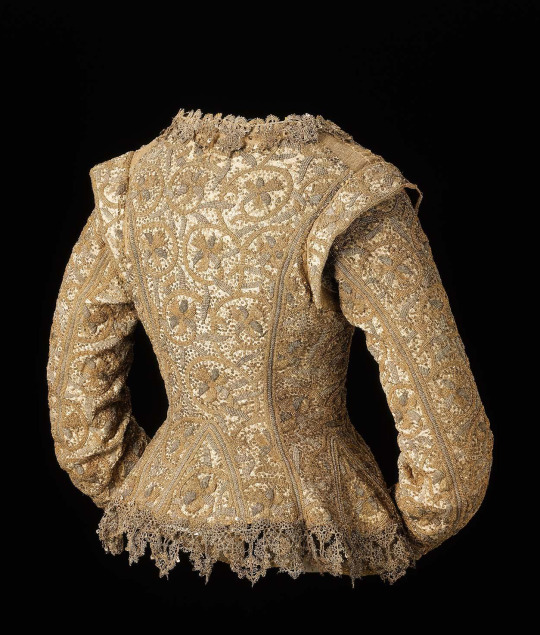#metal bobbin
Explore tagged Tumblr posts
Photo

2518P Brother Baby Lock SA156 Plastic Bobbins, Singer, Janome, Necchi Kenmore 10pc
2518P Brother Baby Lock SA156 Plastic Bobbins, Singer, Janome, Necchi Kenmore
This listing is for 10 #2518P Plastic Bobbins CLEAR
Brother, BabyLock, Singer, Janome, Necchi Kenmore
This very popular bobbin will fit many home sewing machines including :
Singer: 15 class, 15-88, 15-90, 15-91, 15-125, 177C, 293, 233, 237, 239, 5102, 5107, 5122, 5123, 5124, 5127, 5522, 5528, and many more.
Brother: Oscillating Hook Machines
Elna : 10-150, 220-250, 410, 450
Kenmore: Oscillating Hook Machines, Most of the 158. xxx models, 385.10111, 385.11541, 385.1151, 385.1181, 12320, 123311, 123312, 12490, 12491, 12492, 12493, 12541, 12641, 12741, 12841
Meister: Oscillating Hook Machines
Necchi: 575FA
New Home: 105-660, 792-990, 1004-1822
Pfaff : 204-211, 521, 541, 721, 741, 4240, 4250, 4260
Riccar: Oscillator
Viking: 140, 160
White: Oscillating Hook Machines
We stock many different types of sewing machine needles, parts,
and supplies for the cutting, sewing, finishing, and embroidery industry.
Feel free to contact us anytime.
You can typically expect a response within 1 - 2 Hours
All orders are carefully packaged and shipped through USPS
LOC217
https://www.etsy.com/listing/831842764/2518p-brother-baby-lock-sa156-plastic
#Brother#Bernina#sewing#sewing bobbin#metal bobbin#2518#singer 15#elna#Kenmore#home sewing bobbin#Viking
0 notes
Text

These Vintage Finds Tell a Story – Guess What They Were Used For!
#crafts#gifts#decor#sewing#quilting#briar rose quilts#bedding#shopping#quilters of tumblr#bobbins#vintage#metal#seamstress#quilt#clothing#thread
5 notes
·
View notes
Text
(Side note, lace and JO has killed me. I'll be back later to reblog stuff and scream about it, probably)
#joker out#it's just TOO MUCH for my lace maker heart#how does it happen that I fall in love with a band#and then I learn about their appreciation for this silly little dying craft#that both my grandmothers have been teaching me since I was a child#that means so much to me#that I for a long time believed would actually be a big part of my job??#yeaaaaah#it didn't happen that way#but my plan was to combine my lace making and goldsmithing#and do bobbin lace jewellery both in metal wire and with other yarn combined with metals#I'm crying so much I can't believe I gave up on it#imagine if I hadn't given up???#also I did not mean to put all of this in the tags#but here we are I guess#brb I'll just go cry some more
8 notes
·
View notes
Text
Got influenced into getting myself some bobbins and I gotta admit the look of all the floss being neatly stored like this is just *chefs kiss*

#jessi does cross stitch#cross stitch#so far there are quite a few colours I have multiple bobbins of which is just because of how I stored it before#in the future i'll just put one skein of each colour on a bobbin and keep the rest as is if i have multiple#this is all just for one project btw which is already over 25% done too#the 2 skeins in the bottom of the box that aren't on bobbins are metallics#i thought putting them on bobbins might damage them or sth
3 notes
·
View notes
Text


With the needle fully out, then fully in, can someone please help me figure out why my bobbin isn't rotating
#i am in genuine tears no one is naming any of the parts and every bobbin fix is ''just put it in the machine''#all the part around it that hold the case in place came out and i dont know what went wrong#shai speaks#it rotates until i put that outermost metal ring over it and then it stops; ive taken everything out and put it back multiple times#it worked fine until everything came out when i went to put in a different bobbin; same size and thread type and all that#i dont know what I'm missing and there isn't a video on earth i can find that isnt about the bobbin itself
2 notes
·
View notes
Text
finally worked through the mental block to fiddle with the sewing machine i got and it works! i think
#its missing the little metal bobbin case so i had to order it#but the peddle works#the needle seems to be fine#the old lightbulb still turns on even#really cool considering its from the 80s
2 notes
·
View notes
Text
this girl doesn’t draw she’s under the existential mood and all she can do is to sort all the things she owns and clean all the accessible surfaces



#putting bobbins into metal cookie boxes is such a grandma thing but it’s actually so good#sometimes i get a weird urge to sort everything and put things into boxes/jars/folders/etc#rly trying to finish tooth business (aka removing wisdom teeth (done) and not having my braces detach from my teeth all the time (not done))
0 notes
Text
I love making stuff and have the creatives temper (nasty bitch)
#other#t talks#anyways i had to look up what size bobbins my sewing machine uses the other day. cause i stepped on a broke mine 💀#and found out lots about my machine!#and turns out i was right! that thing is unnaturally heavy!#everytime i had to lift mine out of the desk i was like. no fucking way those youtubers are lifting those sewing machines like that.#truns out they are and mine is all cast iron metal and just super dense 💔#anywaysssss timw to go draw 🤗
1 note
·
View note
Text
How Not to Break Your Sewing Machine
I work in a shop where we repair sewing machines (a LOT of sewing machines), and unsurprisingly we see a lot of the same problems over and over again, so I'm here with some advice on how to keep your machine running longer.

When you break a needle, dig around until you have found the broken piece. If you leave it in there, it can end up in the wrong place at the wrong time and break something vital.
SLOW DOWN. The function of your sewing machine depends on the different moving parts ending up in the right place at the right time. Having to go through a lot of/heavy material slows the needle down, but it doesn't slow down the mechanism underneath the needle plate. If you try to go your usual speed, the needle will arrive too late and collide with something it shouldn't, breaking either the needle or the bobbin case. If the material is especially heavy (say you're sewing several layers of denim, or sewing webbing onto canvas), take your foot off the pedal and turn the machine by hand.
Clean out the bobbin area after each project. Really. Your machine comes with a little brush for this purpose. If it doesn't, a little dollar-store paint brush will work just fine. Remember what I said above about things being in the right place at the right time? Everything needs to be able to move freely for this to work. I know it looks like it's just a little dust and fluff, but it will jam up your machine eventually.
If you can, get your timing adjusted by a professional. I know most people don't have a sewing machine repair shop in their neighbourhood, but if you can do this, it's worth it. If the machine's timing is good, then you're more likely to have a little leeway for heavier fabric or a lintier bobbin case. When the timing is just a bit off, it takes less of an obstacle to put the needle in a place it shouldn't be.
If you can, buy a machine built before 1980. If it's still working 50 years after it was made, it's gonna keep working. Those older machines are made with metal gears and therefore weigh a ton, so they're definitely not a good choice if you don't have a permanent setup for your machine, but it means they basically last forever. Newer machines are made with plastic parts, and no matter what you do, they will break.
Don't buy a Singer Heavy Duty. I'm sure those machines have their benefits, but they are absolutely not heavy duty. We repair more Singer Heavy Dutys than any other single model of sewing machine. If you're already stuck with a Heavy Duty, then follow my advice above even more scrupulously, and start shopping around for a replacement if you can. You can get a used sewing machine of better quality for significantly less than a new Heavy Duty.
To keep things working properly, make sure you're:
threading your machine properly
using the right kind of bobbin
adjusting your tension properly
and using the right kind of needle for the fabric you're sewing!
(These things are unlikely to break your machine, but they will keep it from sewing properly.)
Other than that, get your hands on your machine's manual and read it carefully. If you can, bring your machine in for a cleaning and adjustment now and then. Your machine will need repairs every once in a while: it's a lot of little moving parts! But these are some basic precautions you can take to avoid some common problems.
#sewing machines#sewing#sewblr#sewing machine#i imagine most of you already know this stuff#but many of our customers do not#sewing machine psa#sewing machine maintenance
2K notes
·
View notes
Text
Oh wow I was not expecting this from the pajamas post xD. But I love learning new things! I'm not a language nerd so I don't know much about other languages except for German.
I just know the practical stuff around sewing, Weaving and embroidery. One of my favorite things is how lace is made in the past.
I know a elderly lady who still does needle lacing and bobbin lace. (She also knits pullovers for me) It is a very beautiful craft and especially the bobbin lace,skilled women can make whole pictures with that. I don't have pics of her stuff but here are some pictures from a museum and so on :)




Bobbin lacing is also very fun to watch as you move the wooden part from one side to the other and so on. And you need so many pins.
Nothing for me I get mad when the treads tangle up
It is a craft that is dying out :(
As for the Tolkiens world.
Lace work is something that I always thought the elves would love to do!!
Think gold laces!!!
On another note do you know about the "viking knit"
That's a modern art of making knitted jewelry like armbands and so on.
The older term is "Trichinopoly" what a mouthful
But I strongly Hc that especially the noldor women are skilled at that!!
Here are some examples I swear they look better in rl



For reasons related to Miriel Þerinde, Vaire,
and the Norns (and maybe Ungoliant and/or Lúthien),
feel free to infodump me, if you will, with fun facts about historical textile arts, history of weaving and sewing, also your HCs about how those things look like in Aman (at any point of history). (You can assume some knowledge on my part of the related crafts, not necessary of history.)
Thank you!
#tolkien#silmarillion#noldor#art and craft#bobbin lacing is so beautiful#i tried viking knit once but i dont like the metallic smell of it#but it is fun to form the bands and you can twist them and add big beads to them!
24 notes
·
View notes
Photo

15041B Bobbins for Consew 255 or 339 Walking Foot
Consew Sewing Machines:
244, 254, 255, 255RB, 255RB-3, 282, 287RB-2, 289, 289RB, 289RB-2, 333, 339, 339RB-1, 399RB-1, 399RB-3, 339RB-3D, 339RB-4, 339RBATC, 339RBL-25, 369RB-2, 389, 389RB
This listing is for 5pc 15041 Large Bobbins
We stock many different types of sewing machine needles, parts,
and supplies for the cutting, sewing, finishing, and embroidery industry.
Feel free to contact us anytime.
You can typically expect a response within 1 - 2 Hours
All orders are carefully packaged and shipped through USPS
LOC190
https://www.etsy.com/listing/666039512/15041b-bobbins-for-consew-255-or-339
#sewing#sewing bobbin#metal bobbin#Walking Foot#Consew#Black Bobbin#15041#Large Bobbins#Consew 255#Consew 339#Consew 289
0 notes
Text




ab. 1750 Dolman of a child said to have been worn by Joseph II, Emperor of Austria (production - Austria (presumably); Hungary (presumably))
silk, bobbin lace of metal thread
(Museum of Applied Arts, Budapest)
477 notes
·
View notes
Text
knitting gromit automaton i made for my sister for her birthday :) details under the cut




the movement is driven by an eccentric cam and lever! took inspiration from their inventions for the look of things so i used metal where i could, added fake rivets to all my shaft stoppers, and modeled the counterweight after the one attached to wallace’s bed for his wake-up machine. also used a sewing bobbin for the handle bc it felt in the spirit of things
close-ups of the set dressing + the lad himself:




#wallace and gromit#gromit#aardman#really happy w this it’s so cute :)#wish i could post a video of the mechanism in action but it won’t let me have two videos in one post#mine#honestly the counterweight is mostly cosmetic it isn’t really doing anything LOL i just liked the look of it so much
241 notes
·
View notes
Text

Woman's jacket, English. About 1610–15, with later alterations. Linen plain weave, embroidered with metallic threads and spangles; metallic bobbin lace. The Elizabeth Day McCormick Collection.
787 notes
·
View notes
Text
Why "Universal" means "Equally bad."
So you go to the store to buy needles for your sewing machine. You are going to find one of two things: a few "Universal" needles, or a large section with dozens of needle types.
"None of these say my machine brand on them," you think. "What do these numbers mean?"
I'm here to help you out!
It turns out that needles for sewing machines have amazing specialties to help make the work easier.
Ball point/Jersey: these needles have a rounded 'ball' point so that they don't accidentally cut the threads in a knit fabric. Ever cut a thread in a sweater? We don't want that to happen in a knit fabric either. Knits are used for t-shirts, Sweatshirts and the like.
Sharp/Microtex Sharp: My Beloved. If you sew on any woven fabric, and see "puckers" along your seam, you're not using a Sharp needle. Developed for micro-textiles, these are brilliant for printed quilting cotton, satin, woven silk, and the like.
Jeans/Denim: larger eye, bladed tip. The Sharp is a stiletto; a Denim needle is a sword. The bladed tip makes it easier for your machine to power through densely woven fabrics like canvas, upholstery fabrics, brocade, and old-fashioned denim.
Stretch: this needle is designed to sew on Elastic fabrics with minimal skipped stitches. Spandex and Lycra can stretch so well that they're carried by the needle into the bobbin area of the machine, preventing the stitch from completing. Stretch needles pass through the fabric easier without punching holes.
Quilting: Yep! There's a needle for this! Great for piecing, these really shine while sewing through the layers of fabric and batting. They make free lotion quilting a lot easier, and you won't have to fiddle with the tensions as much!
Leather: perfect for Vinyl, pleather 'vegan' leather, actual leather, and suede, this needle is like a Denim needle with a twist; a twisted blade, that is. It makes a perfectly round hole to prevent the dreaded "Tear along the dotted line" effect.
Metallic: yes, all needles are made of metal, but this type is gentle to metallic threads for decorative work.
Topstitch: this needle has an extra large eye and groove to accommodate heavier threads. Great for high-contrast visible topstitching with heavier threads.
There are others, but this is a good place to start. "Universal" needles don't have any of the specialized features listed above. They aren't sharp, aren't ball-pointed either. They have an average sized eye and groove.
They will sew. They will form a stitch, and they can be a lifesaver when you're not sure what kind of needle to use because you're sewing with more than one challenging fabric simultaneously. However, they aren't "good at" anything. They're kind of "equally bad" at everything.
Do yourself and your sewing machine a favor: Use the right needle for the right project.
One final pro tip: change your needle every 8 hours or so of actual sewing, or at the beginning of every major project.
194 notes
·
View notes
Text
155 notes
·
View notes